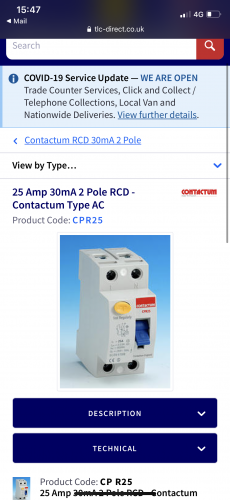the picture shows the original set up. And the replacement


the picture shows the original set up. And the replacement
AJJewsbury:the picture shows the original set up. And the replacement
The original seems to be a D1 MCB with a vigi unit attached - in effect an RCBO - just checking that you're only suggesting replacing the RCD element with the RCCB rather than the entire unit.
- Andy.
I had similar thoughts.
First off check the original RCBO is suitable, it may not be performing correctly because it is unsuitable for the installation.
Then if it is suitable, consider replacing like with like.
Zoomup:
Is an R.C.D. really needed on a 55-0-55 Volt supply as used on construction sites?
Z.
In most circumstances, with only 55 volts to earth I would not consider an RCD to be required.
There are two main exceptions, firstly to tick a box if ones employer, or some other authority says "RCDs to be used on all portable power tools" Without any consideration as to supply voltage or other circumstances.
Secondly, I would consider an RCD to be a prudent extra precaution in higher risk conditions such as standing in water, or in the rain. The better choice in such cases is often to use compressed air for power tools and LPG or paraffin for lighting.
55 volts to earth is clearly much less risky than 240 volts, but it is still over twice the limit for SELV, and an RCD could therefore be prudent in high risk situations.
We're about to take you to the IET registration website. Don't worry though, you'll be sent straight back to the community after completing the registration.
Continue to the IET registration site